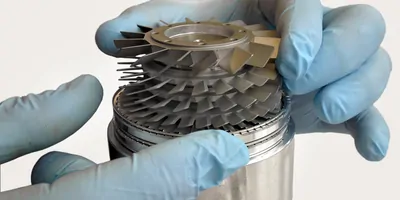A vacuum pump is a vital piece of equipment in most labs. There are various types of vacuum pumps, but many are impacted by common issues, such as exposure to solvents or wearing of parts. These problems can lead to an inefficient process and shorten the lifespan of your pump. Here, we provide simple tips to keep your vacuum pump running at its best for as long as possible.
Follow the manufacturer’s instructions for maintenance and use
As Carl Watkinson, business development manager, Vacuum Products Division at Agilent, notes, “Vacuum equipment and the instruments using it can cost tens of thousands if not hundreds of thousands of dollars, so don’t scrimp on maintenance and follow the manufacturer’s recommendations.” Watkinson also recommends taking advantage of the feedback the components provide by logging operating parameters, and service actions to deliver optimal performance, reliability, and longevity. “In short, it’s about keeping the pump’s critical operating parameters within the appropriate window, whether that’s the gas load, fluid level and condition, or environmental conditions like ambient temperature and voltage requirements.”
According to Gary Osborne, channel manager, Laboratory Products at KNF Neuberger, many common mistakes, such as not properly installing replacement parts and incorrectly reassembling pump components, can be avoided by following the manufacturer’s instructions. “Consult the user’s manual, contact the manufacturer for added guidance, reach out to the sales rep, and review instructional videos and online resources,” advises Osborne.
Manuals will provide advice specific to the type of pump you’re using. For example, Ben Sigmon, product specialist at Buchi, notes that oil pumps require warm-up time to achieve the best performance, and oil should be inspected regularly to ensure no solvent has accumulated. “For diaphragm pumps, ensuring the membranes are dry will increase their usable life and will offer the best operating performance,” adds Sigmon.
The maintenance cycle is also important, and Osborne explains that this is dictated by the type of pump and is dependent on the conditions of the application, including temperature, pressure/vacuum, and chemical compatibility.
Protect the pump from solvent vapors
A common issue with several types of pumps is exposure to solvent vapors. This can cause premature wear and seriously damage the pump, so measures should be taken to minimize the chance of vapor exposure and buildup. One way to do this is to ensure ample cooling of the solvent. As Sigmon explains, “For systems handling solvent vapors, having a suitable cooling source, and applying appropriate vacuum without setting the pressure too low, will help condense vapors before reaching the pump. Additional in-line condensers or solvent traps can also provide increased surface area for heat exchange to remove thermal energy from vapors, collecting them before contacting the pump.”
It’s even more important to avoid exposure if you’re dealing with corrosive solvents. “If handling corrosive samples, an acid neutralizer can be placed in the vacuum line to reduce direct exposure in the pump,” says Sigmon.
Regular maintenance and checks should be carried out on any parts attached to a pump. Osborne explains that these may cause liquid or particulate ingress into the head, which would potentially cause issues. “Items such as tubing, filters, and any liquid traps that are attached should be inspected for damage or wear and tear and replaced as necessary,” he advises.









